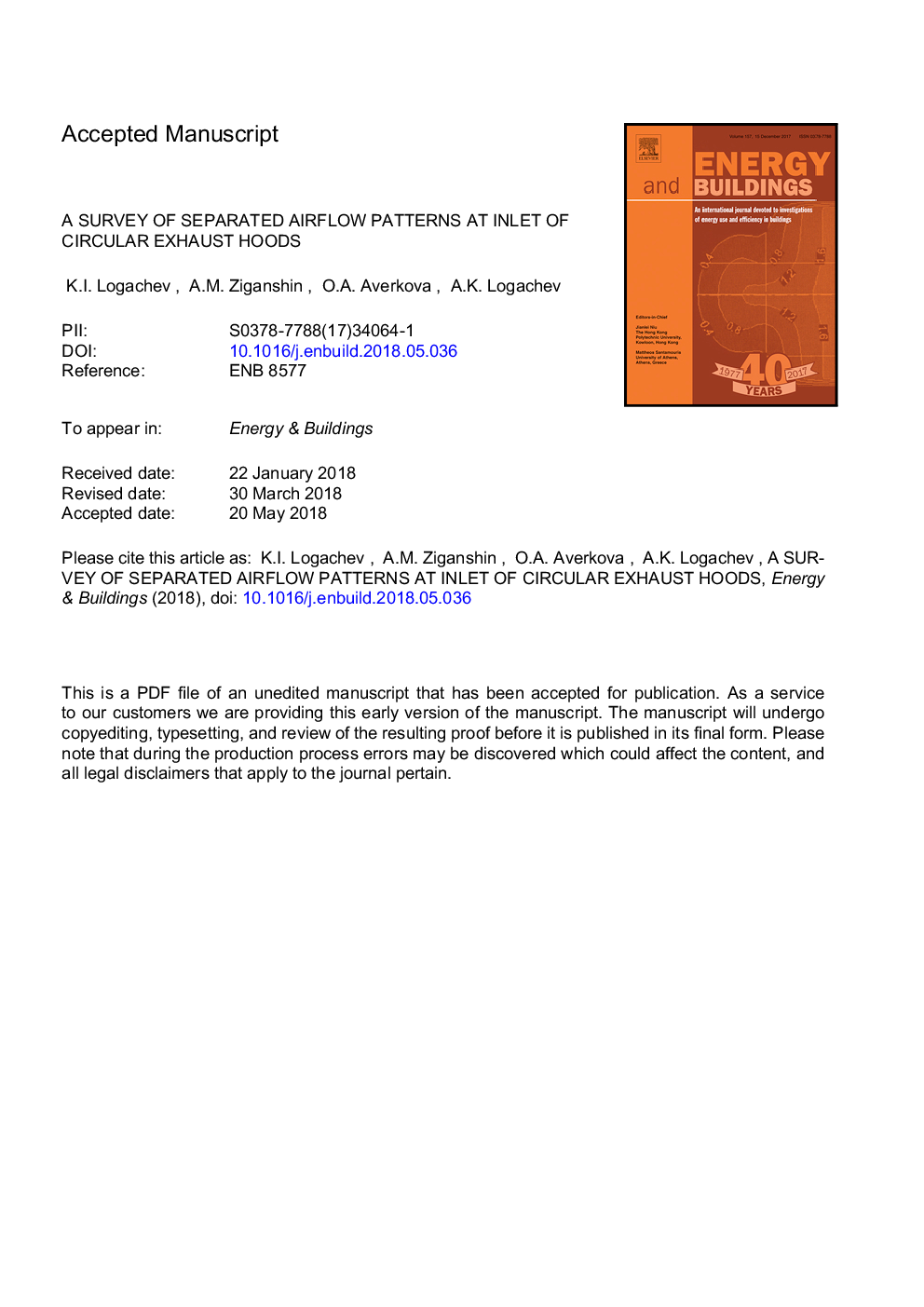| Article ID | Journal | Published Year | Pages | File Type |
|---|---|---|---|---|
| 6727243 | Energy and Buildings | 2018 | 22 Pages |
Abstract
The stationary discrete vortex method has enabled development of an adequate and reliable technique for computation of separated flows at inlet of a local exhaust hood. We have studied airflow patterns around the exhaust duct using the discrete vortex method, CFD and natural experiment. Characteristic dimensions of the flow separation area at exhaust hood inlet have been determined with relation to the length and inclination angle of the hood. Shaping the exhaust duct to fit the resulting separation zone outline will enable savings of energy that would otherwise be wasted on overcoming local drag forces; furthermore, this will prevent escape of contaminants circulating in the separation area to the environment. Determining airflow velocity distribution patterns will facilitate the choice of the most efficient exhaust duct design to minimize the cost of contaminant removal.
Related Topics
Physical Sciences and Engineering
Energy
Renewable Energy, Sustainability and the Environment
Authors
K.I. Logachev, A.M. Ziganshin, O.A. Averkova, A.K. Logachev,
